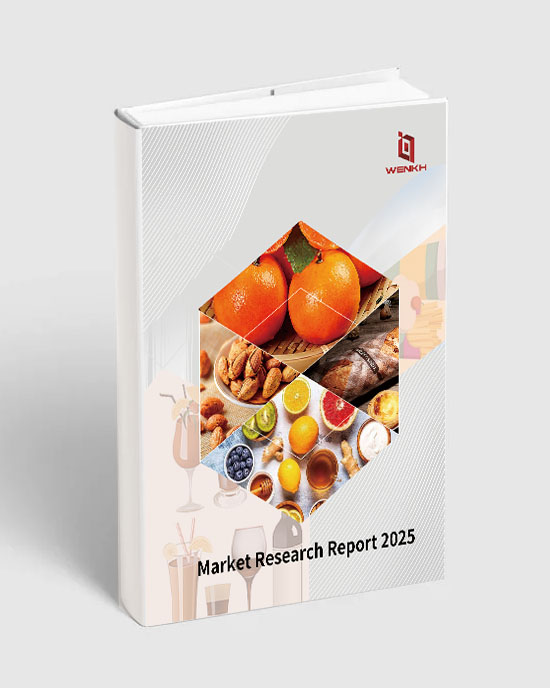
Global Protein Hydrolysate Ingredients Market Size, Competition Landscape and Supply Chain Research Report 2025



Research Summary
Protein hydrolysate ingredients are partially digested proteins that have been broken down into smaller peptides and amino acids through enzymatic or chemical hydrolysis, making them more easily absorbed and utilized by the body. These ingredients are widely used in nutritional products such as infant formulas, medical nutrition, sports supplements, and functional foods due to their enhanced digestibility, reduced allergenicity, and rapid bioavailability. Depending on the source—such as whey, casein, soy, or plant proteins—protein hydrolysates can offer specific nutritional and functional benefits, including improved muscle recovery, support for gut health, and tailored nutrition for sensitive populations.
According to WENKH research statistics, the global Protein Hydrolysate Ingredients market size will reach 3,244.40 Million USD in 2025 and is projected to reach 4,760.42 Million USD by 2032, with a CAGR of 5.63% (2025-2032). Among them, the Asia-Pacific Protein Hydrolysate Ingredients market is undergoing rapid changes, reaching Million USD in 2025, accounting for approximately % of the global market share. It is projected to reach Million USD by 2032.
The global Protein Hydrolysate Ingredients market is highly competitive, with key market players including Cargill, Roquette, ADM, Arla Foods, NZMP (Fonterra), FrieslandCampina, Kerry Group, Agropur, Armor Proteines (Savencia), Tatua, Glanbia, Ingredia, AMCO Proteins, A. Costantino, Protein SA, Carbery, Zhongshi Duqing (Shandong) Biotechnology, Baoding Way Chein Food Industrial, Axiom Foods, Beijing Semnl Biotechnology, Fermented Product Partner (FPP) (THgroup), Gelken, Huaibei Rongfeng Food, etc. This report categorizes the competitive landscape of the global Protein Hydrolysate Ingredients market into three tiers based on annual revenue, with the top three market players holding approximately % of the total market share.
This report provides an in-depth analysis of the global Protein Hydrolysate Ingredients market, including market size, price trends, market status and future development prospects. It particularly focuses on the market share, product characteristics, pricing, revenue, sales volume and gross profit margin of major manufacturers in the global Protein Hydrolysate Ingredients industry. Additionally, this report provides an in-depth analysis of the market status and future development trends of different segments of Protein Hydrolysate Ingredients and their downstream application fields.
In terms of data coverage, this report includes extensive time-series data. Historical data spans from 2020 to 2024, providing a solid foundation for analyzing market development trends. The year 2025 is used as a base year to accurately assess the current market landscape, while forecast data extends from 2026 to 2032, using scientific analysis methods and models to offer forward-looking projections and insights into the market's future trajectory. This provides valuable reference information for industry participants and stakeholders.
The report covers regions and countries including North America, Europe, China, Asia Pacific (excluding China), Latin America, the Middle East, and Africa. It particularly focuses on the revenue and sales volume of Protein Hydrolysate Ingredients in these regions and countries, as well as the market share of key market players in each region. The report provides an in-depth analysis of the regional distribution and future development trends of the Protein Hydrolysate Ingredients market. By considering local policies, this report evaluates the market prospects of Protein Hydrolysate Ingredients in each region and country, aiming to help companies gain a comprehensive understanding of the industry characteristics and development potential in different regions, optimize regional business layout, and develop precise market strategies to achieve global development goals.
This report places significant emphasis on data quality and reliability, leveraging a wide range of data sources to ensure accuracy and validity. Primary data collection is conducted through multiple channels, including in-depth interviews with senior corporate executives, industry experts, supply chain participants, and end consumers. This helps to gain insights into corporate strategic planning, industry policies, supply chain dynamics, and user experiences. Secondary data sources cover an extensive range, including authoritative government statistics, customs databases, industry related reports, third-party paid databases, investment research reports, academic studies, corporate financial statements, real-time media updates, and information from international organizations, all of which serve as a solid foundation for data verification and analysis.
Companies Covered
Cargill
Roquette
ADM
Arla Foods
NZMP (Fonterra)
FrieslandCampina
Kerry Group
Agropur
Armor Proteines (Savencia)
Tatua
Glanbia
Ingredia
AMCO Proteins
A. Costantino
Protein SA
Carbery
Zhongshi Duqing (Shandong) Biotechnology
Baoding Way Chein Food Industrial
Axiom Foods
Beijing Semnl Biotechnology
Fermented Product Partner (FPP) (THgroup)
Gelken
Huaibei Rongfeng Food
Product Segment
Plant Protein Hydrolysate (including potato, soy, pea, rice, wheat etc types)
Whey Protein Hydrolysate
Casein Hydrolysate
Collagen Hydrolysate
Others
Product Application
Sport Nutrition
Food and Beverage
Infant Formula
Medical Nutrition
Others
Chapter Scope
Chapter 1: Product Statistical Scope, Product Segmentation Types and Downstream Applications, Overall Market Size, Current Status and Development Prospects
Chapter 2: Global Protein Hydrolysate Ingredients Industry Chain Analysis
Chapter 3: Global Protein Hydrolysate Ingredients Industry Environment Analysis and Porter's Five Forces Analysis
Chapter 4: Analysis of the Competitive Landscape of Major Companies in the Global Protein Hydrolysate Ingredients Market (Market Share, Product Revenue and Sales Volume Comparison, Tier Division, Corporate Expansion and M&A Trends)
Chapter 5: Analysis of Global Major Companies (Company Profiles, Product Features and Product Segment, Product Revenue, Product Sales Volume, Product Average Price, Product Gross Profit Margin and Geographical Sales Share)
Chapter 6: Global Protein Hydrolysate Ingredients Product Segment, Downstream Application and Major Regional Market Size Analysis (Sales Volume, Revenue and Average Price)
Chapter 7: North America Protein Hydrolysate Ingredients Product Segment, Downstream Application, and Major Countries Market Size Analysis (Sales Volume, Revenue and Average Price)
Chapter 8: Europe Protein Hydrolysate Ingredients Product Segment, Downstream Application, and Major Countries Market Size Analysis (Sales Volume, Revenue and Average Price)
Chapter 9: China Protein Hydrolysate Ingredients Product Segment, Downstream Application, and Major Countries Market Size Analysis (Sales Volume, Revenue and Average Price)
Chapter 10: Asia Pacific (excluding China) Protein Hydrolysate Ingredients Product Segment, Downstream Application, and Major Countries Market Size Analysis (Sales Volume, Revenue and Average Price)
Chapter 11: Latin America Protein Hydrolysate Ingredients Product Segment, Downstream Application, and Major Countries Market Size Analysis (Sales Volume, Revenue and Average Price)
Chapter 12: Middle East and Africa Protein Hydrolysate Ingredients Product Segment, Downstream Application, and Major Countries Market Size Analysis (Sales Volume, Revenue and Average Price)
Chapter 13: Research Conclusion
Chapter 14: Methodology and Data Source
Purpose and Value of the Report
Market Trend Insights: Analyze industry trends, market dynamics, and future growth potential to help companies forecast changes and develop strategic plans.
Competitive Landscape Analysis: Understand key players' revenue segmentation, strategies, market share, and business models to guide competitive decisions.
Investment Decision Support: Provide feasibility analysis through market size, growth rate, demand trends, and potential risks for informed investment decisions.
Target Customer and Demand Analysis: Examine consumer behavior, purchasing preferences, and pain points to optimize products and improve market penetration.
Policy and Regulatory Insights: Interpret relevant industry policies to ensure compliance and mitigate regulatory risks.
Business Model Optimization: Offer data-driven suggestions for enhancing business models and improving profitability.







